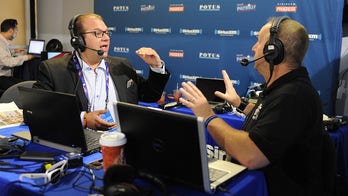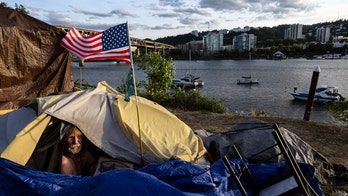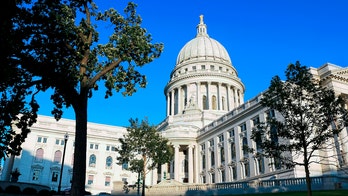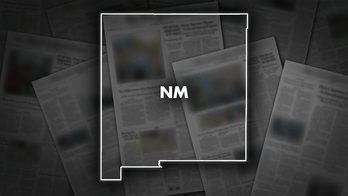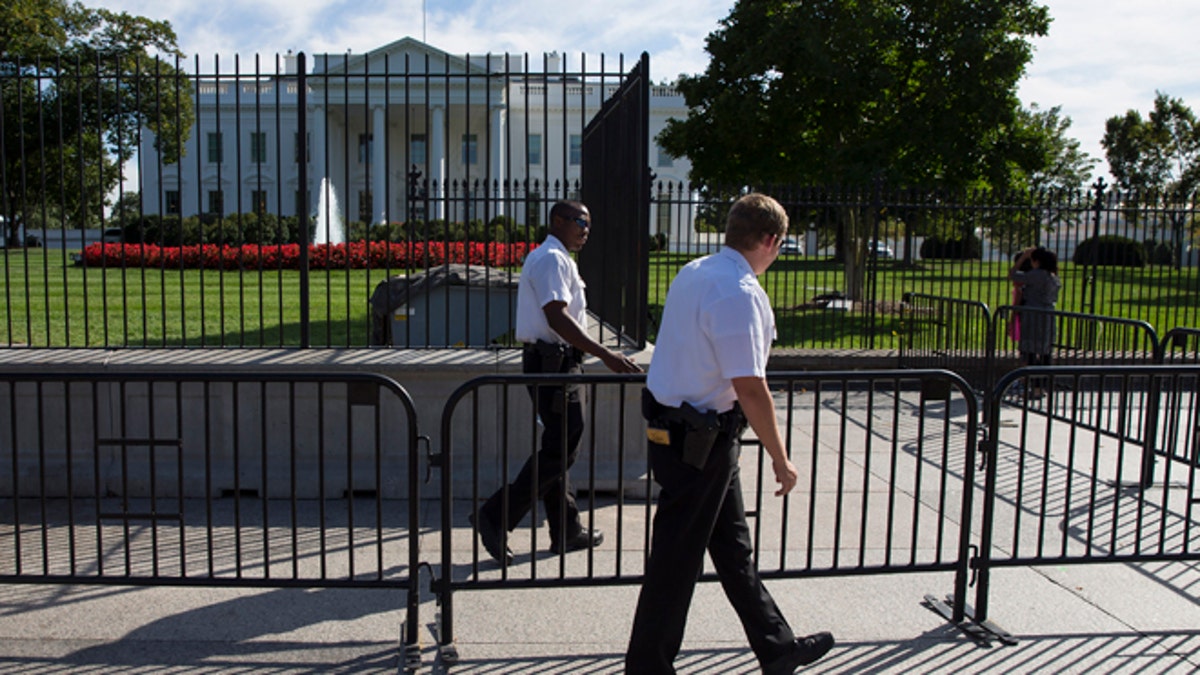
In this Monday, Sept. 22, 2014 photo, Secret Service police officers walk outside the White House in Washington. (AP)
It made for a wild foot chase.
A man breached the security barrier at one of the main institutions of American government and dashed toward an unsecured door. He ducked inside the building before authorities apprehended him.
No, this wasn’t the episode at the White House Friday night. (In that incident, prosecutors say suspected intruder Omar Gonzalez scaled the White House fence and sprinted across the North Lawn of the complex, actually making his way into the Executive Mansion before Secret Service agents subdued him inside the North Portico.)
Six years and one day prior to Gonzalez’s alleged Executive Branch incursion, 20-year-old Carlos Greene rammed a silver Chevy Trailblazer into a barricade on the Senate side of the U.S. Capitol around 7:45 on a Monday morning. Construction workers were in the middle of building the massive Capitol Visitor’s Center (CVC) under the plaza between the Library of Congress and Supreme Court. A substantial security fence encircled the subterranean project, which ran from the street all the way to the edge of the Capitol itself. U.S. Capitol Police positioned a cruiser at one of the gates on the perimeter of the construction venture near the Library of Congress. But officers didn’t park the vehicle in the proper defensive posture by the entryway. Green then smashed his SUV through the gate before wrecking into a concrete jersey wall erected around an underground skylight still under construction.
Unimpeded, Green bailed from the Chevy and loped up the steps on the East Front of the Capitol and scurried inside. These are the same steps where the U.S. used to inaugurate presidents before moving the event to the West Front of the Capitol, staring down the National Mall, in 1980.
The door by the East Front was unlocked and unguarded. Officers generally kept the door unshackled – and sometimes unpatrolled – because it emptied only into the construction area which was fenced off. The door was rarely locked so construction workers could go back and forth into the Capitol. It had no metal detector since it was never used for public access.
To the immediate right of the ornate East Front entrance stands a hulking, bronze plaque, embossed with the names of those killed when Flight 93 crashed near Shanksville, Pa., on 9/11. It was determined a few years after 9/11 that Flight 93 was destined for the Capitol. Green ran past that memorial and through the Rotunda, the most-hallowed shrine in the American system of government.
Green, a gun tucked into his waistband and toting crack cocaine, burst by the offices of then-House Speaker Dennis Hastert, R-Ill., and then-Senate Majority Leader Bill Frist, R-Tenn. He made it to the crypt, a circular room immediately beneath the Rotunda, adorned with an arcade of arches. It’s reminiscent of crypts under the sanctuaries of cathedrals.
By that point, 25 U.S. Capitol Police officers joined the pursuit. Green eventually navigated his way to the bowels of the Capitol and a sleepy congressional outpost called “The Flag Office.” This is where a small band of workers handle thousands of requests from constituents and lawmakers to fly flags atop the Capitol in honor of someone or a special occasion.
A Capitol Police officer later testified in court that Green frantically told a flag office employee he needed “a place to hide.” A brief confrontation ensued as some other employees joined the melee, knocking pictures and a fire extinguisher off the wall. One worker finally got a hold of Green and effectively thrust him into the cadre of officers who finally caught up with him.
Just weeks before the Green chase, several officers flagged for their superiors issues about the security of the CVC construction site.
“This was unacceptable by my expectations for the Capitol Police,” fumed Acting U.S. Capitol Police Chief Christopher McGaffin at the time.
----------------------------------------------------------
After Friday’s White House infiltration, the Secret Service announced enhanced patrol efforts near the White House. The House Oversight Committee scheduled a hearing for next Tuesday about the security rift. This came as law enforcement sources indicated they may add another layer of security around the White House, inspecting bags and briefcases several blocks away.
This is not the security posture at the Capitol. Passersby can stroll right up to the edge of the building. The same is true with the eight House and Senate office buildings located nearby. People can walk around the Capitol plaza, the Russell Senate Park and linger in a courtyard outside the Hart Senate Office Building. U.S. Capitol Police conduct no screenings until one attempts to come inside. Then, everyone must walk through a metal detector. But all of these checkpoints are located inside the facilities – and in some cases, a good way in.
Terry Gainer just retired this spring after more than seven years as the Senate’s sergeant at arms. Prior to that assignment, Gainer was chief of the U.S. Capitol Police for four years. Gainer has long pushed for extending the security perimeter around the Capitol to the edge of the grounds. That way, screening is done far away from the building itself.
“The big difference is that the White House has a fence. That gives you a chance to respond. You can get right up to the edge of the Capitol. To me, it makes a lot more sense on the Hill to put a fence around the four corners. And then you have free access to the entire complex and not worry about a knife or a gun or a suicide bombing,” he said.
But the difference is that the Capitol needs to provide for reasonable public access. The White House represents the Executive Branch. But citizens must have access to Congress under the First Amendment’s protection of free speech and the guarantee to “petition the Government for a Redress of grievances.”
“You have a right to appeal and a right to have access to it. It is a completely different animal than the White House,” said Gainer.
“The security at the Capitol is reasonable,” said one source familiar with guarding Capitol Hill. “It’s not to the level it needs to be. But it’s striking that balance.”
Still, access to both campuses remains an issue.
“One thing everybody ought to do is calm down before we start erecting fences,” said Gainer.
Capitol Attitude is a weekly column written by members of the Fox News Capitol Hill team. Their articles take you inside the halls of Congress, and cover the spectrum of policy issues being introduced, debated and voted on there.

